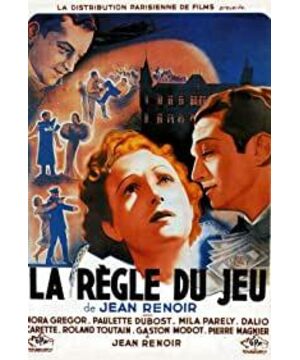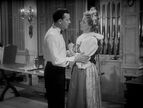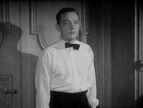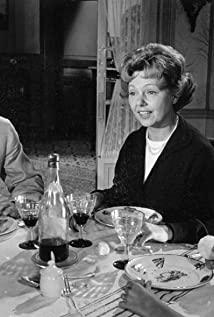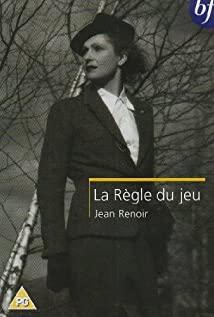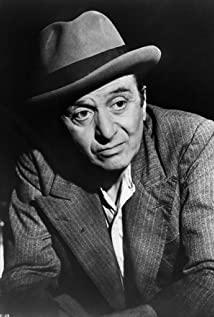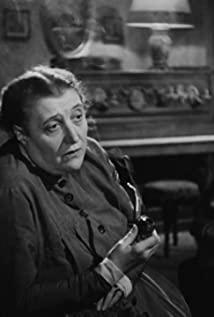Another type of film represents an era, the end of a cinematic period, such as "The Passion of Joan of Arc", "Nights in Cagliari". . . . . .
"Rules of the Game" is such a film, it represents the end of Renoir's glorious French period, the entire 1930s from poetic realism to realism to "leftism" to pacifism, and finally, Renoir made this film he called "" comedy" movie. This film is also a summary of the pre-war sound films, but also represents the end of an era - the history of the aristocratic era will be completely over.
Although Renoir only sees this work as his ambitious attempt to classical comedy, and the story of the film does have the appearance of the comedy of Diderot's era, it is obvious that the film does not stop there. Renoir also admits that he has always Criticizing the decaying society, no matter whether the director intends it or not, what we see in the film is the decline of the last aristocracy and the criticism of social reality. Because of this, the audience of 39 years regarded this film as an attack on the ruling class , Renoir's painstaking film was the most tragic failure of his life, Renoir himself called the greatest shame in his life, but fortunately the value of this film was recognized after the war, and the film was sold out in Venice. Renoir was happy to see that his past shame was worth it.
Renoir summed up his personal style throughout the 1930s in this film -
1. Deep focus scheduling, the events in the foreground and the background occur simultaneously, and the movement of the background to the foreground allows us to see different events happening at the same time, and the audience chooses their attention. At the same time, along with the movement and the actor's sight, sound, it expresses an open off-painting space.
2. The huge and complex movements can be said that the camera of this film has basically never stopped. With each sequence of shots, we have seen a wonderful narrative. These shots are not limited by the axis of Hollywood, and at the same time ensure the rhythm of the film (the rhythm of this film). Obviously segmented) while the regularity of movement is perfectly balanced.
3. The wonderful scene scheduling, in line with the movement of the camera, the characters in the film are also constantly moving in the environment, they are interspersed in the villa, especially the dance party and the crowd after the conflict and the chaos formed the climax of the narrative. The scene scheduling of the cameras and actors is astoundingly perfect, and even today there are no such wonderful long sequences.
4. The sudden change of narrative style, which is Renoir's most striking personal style, from tragedy to comedy, the narrative style will appear abruptly in Renoir's films. Village Corner> can be regarded as a representative), such as - some comical passages in the film are dealt with in the rhythm of the chase film; on the other hand, the hunting scene in Soronius seems to provide a cruel Sad theme.
These 4 personal styles are always combined (indicating that these actually require more detailed analysis of examples and pictures) to achieve a form, form is content, and the film gives the audience an omniscient perspective, allowing them to follow the camera and follow the Actors enter the decadent, boring upper class and learn the "rules of the game" of social hypocrisy.
The film shows the final decline of the European aristocracy. These upper-class people live an empty, boring and luxurious life. They pass their days in emotional games. They can't determine their feelings and can't control the situation. Men and women live under the mask of each other. false life. And it's all based on one "rule of the game", and that is -- lies.
Lying is the law of "high society". From the media to individuals, everyone carefully crafts umbrella-style lies. In bright situations, everyone is covering up the truth, but it seems that they have a different set. People deceive each other. In the film The "honest" pilot violated this law, and at the end, he was killed by a secretly fired bullet, and the unemployed (played by Renoir himself), poachers, pilots, poachers, and pilots appeared in the upper class of society, triggering a series of tragicomedies. In order to get everything back to normal order, these people are all wiped out (death, leave) at the end of the story.
The film clearly shows the decline of the aristocracy. They have come to the end of their era, and their "rules of the game" have become a series of lies to cover up. At the end of the film, the host covers up the truth of the death, so that everyone Going to bed early, he walks into the house, into the cover of last hypocrisy, and their farewell to the outside world marks the end of European history dominated by the aristocracy, though the film doesn't replace their powerful characters.
In Renoir's films, there are no evil characters, just as the famous line in the film "Everyone has their own reasons." This sentence has also become the representative of Renoir's films.
The perfect combination of characters and environment, distinct personal style, complex and huge sets and movements make this great comedy, and the tragedy contained in this comedy is like a scene in the film, Renoir's character is in a virtual. In the stage performance, he performed a few moves with great interest in the face of the non-existent audience, and finally sat down on the steps in despair. This is the case with all the characters in the film. Faced with the "rules of the game", they are so disgusted with reality and want to To escape, but powerless. . .
View more about The Rules of the Game reviews


